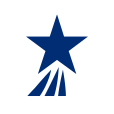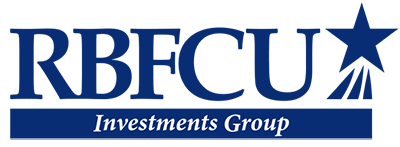Cash Reserves and Emergency Funds: What They Are, Why They Matter
Life is full of unexpected twists, from sudden car repairs and medical emergencies to investments. To help keep your finances on track, consider placing money aside for short-term financial opportunities and goals, emergencies, and life’s little “surprises.”

While the two terms are often used interchangeably, cash reserves and emergency funds may serve slightly different purposes within your financial plan.
In fact, one could argue that an emergency fund is a type of cash reserve. Both involve setting aside money in ways that can help contribute to your overall financial well-being.
By building a cash reserve alongside an emergency fund while also maintaining cash flow for your normal expenses, you may feel better prepared to navigate the challenges or opportunities that life can present.
Why prepare for an unanticipated opportunity versus an unexpected difficulty?
When it comes to financial planning, both cash reserves and emergency funds involve setting money aside for your personal use.
Sooner or later, however, life throws most of us a financial curve ball. That’s where an emergency fund can prove helpful.
As the phrase suggests, an emergency fund is money set aside to pay for unexpected expenses1 (such as home repairs in the wake of a storm) or an unforeseen event (such as the loss of a job).2 Other uses might include car repairs or surprise medical bills.
Unanticipated expenses can be large or small. Either way, they are not initially part of your regular monthly budget and bills, hence the potential need for an emergency fund.
A cash reserve is a pool of funds that you can access when an unanticipated need presents itself. For instance, perhaps you encounter a new investment opportunity, want a home renovation, decide to start a business, or have the chance to travel to your dream destination for a friend’s wedding.
With a cash reserve on hand, you may feel more prepared financially to embrace those opportunities.
Establishing an emergency fund alongside a larger or separate cash reserve may seem like a big commitment, but it need not be, especially if you start growing funds early in life. In some cases, the earlier you start, and depending upon which accounts you use to save your money, the longer you’ll be able to take advantage of compound interest.
Ultimately, both types of funds can potentially provide a greater sense of financial security and flexibility. Again, with these strategies to help, you may feel more prepared for life’s big moments.
Why is it important to have both a cash reserve and an emergency fund?
Again, the names are used interchangeably, with an emergency fund arguably being a type of cash reserve.
Yet a cash reserve can help prepare you for so much more than a crisis. Basically, it can help you refrain from tapping into funds that are earmarked for long-term objectives (e.g., college and retirement).
»Tip: An emergency fund is especially important if you carry significant debt, be it from a college loan or credit cards. The fund can help you keep making payments on the debt if, say, you experience job loss or another salary change.
What is the “right” amount to have in an emergency fund or a cash reserve?
That’s up to you.
To address an emergency, you may find it helpful to set aside enough money to cover three to six months4 of essential expenses, such as your mortgage or rent, groceries, utilities, transportation and regular medical expenses.
This target amount can vary based on your personal situation, and the number can change over time.
The following scenarios, however, touch upon some common considerations:
- A single-income family may want to focus on a six-month or longer reserve, as might individuals who have variable incomes (e.g., small business owners or people who work on commission).
- Dual-income families may find that an emergency fund at the lower end of the three-to-six-month timeline is suitable, although factors like significant debt may be worth considering.
- A higher fund amount — 12 to 24 months of essential expenses — may appeal to retirees or anyone who is concerned about unexpected health care costs (e.g., individuals with a family history of certain types of conditions or diseases).
While a cash reserve is designed to have easy access to funds for the unexpected, how much you choose to set aside for opportunities and emergencies is something worth discussing with a dedicated financial advisor. Working together and looking at your assets, debt, lifestyle and long-term plans, you can set a target figure (or figures).
What is the best way to build and store emergency funds and cash reserves?
Putting a saving system5 in place to build up your emergency fund can be a great place to start.
You can accomplish that by automatically setting aside money from each paycheck into a special savings or checking account through your credit union or other banking institution.
Whether you auto-transfer an amount each pay period or manually set aside a percentage of each paycheck, consider selecting an amount that will not cause financial stress. You might want to put a larger amount of money into a reserve if, say, you get a bonus, inherit money, or profit from the sale of property.
Over time, you can build toward the goal amount you have for your emergency fund, then shift to separately building your cash reserves.
»Tip: While setting aside funds can feel daunting, remember that reserving even a small amount each month can be helpful.
Types of accounts to consider
Consider keeping some or all funds6 in a high-yield savings or deposit account. Do remember, however, to select an account that provides easy access and little or no penalty for withdrawals.
While keeping when you may need your money in mind, you could consider the following structure7 to determine where you should keep your cash reserve. This can provide liquidity and may have the potential to grow your funds.
- Immediate or continuous access:
- Checking account
- High-yield savings or deposit account
- Cash management or sweep account
- One-to-three months:
- Money market account
- Investment certificates
- Three-to-twelve months:
- Certificates of deposit (CDs)
- Investment certificates
- Individual bonds
- Treasury bills
- Ultra short bond funds
»Tip: If you have enough set aside to put in a certificate, consider the time frame for when the funds will be available to you. You may also want to stagger the maturity dates to avoid early withdrawals, which may incur a penalty fee.
What are the guidelines for using emergency funds or cash reserves?
Again, that’s ultimately up to you.
Typically, the objective of a cash reserve is to only use the funds if an opportunity that meets your goals becomes available. These growth opportunities may include investments, larger purchases like a home or car, or even career enhancements such as specialized training or an advanced degree.
With an emergency fund, the goal is to hopefully never “have” to spend the money. But if something comes up that is outside of your spending budget — unexpected home or auto repairs, a medical situation, or a job loss, the fund is there to help you address the emergency without incurring debt.
A potentially helpful lens to use is “need versus want.” Emergency fund money may be earmarked for needs. Cash reserves might be set aside primarily for “wants,” but you could certainly also use them for emergencies. Of course, those are not hard and fast rules but rather a way to weigh your options.
»Tip: Consider setting annual goals for both your cash reserves and your emergency fund. Check your accounts and your progress regularly (once a year at the minimum) so that you know how your funds are doing — and whether the amount you’ve set aside still aligns with your lifestyle, budget and the economy.
The takeaway
Planning for the unexpected — both the good and the bad — can be a wise way to help maintain your financial well-being across your lifetime.
To learn more about building a long-term, comprehensive financial plan that reflects your goals and objectives, the RBFCU Investments Group team is here to offer insights, resources and referrals.




